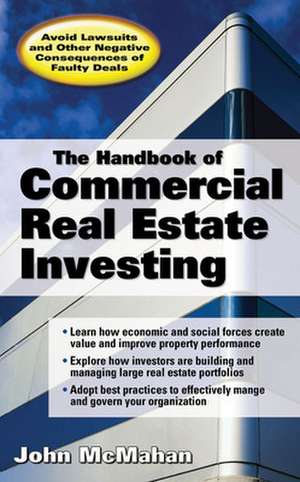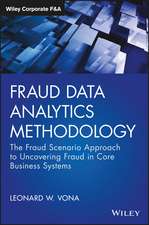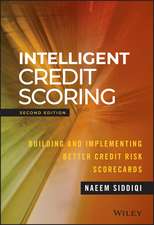The Handbook of Commercial Real Estate Investing
Autor John McMahanen Limba Engleză Hardback – 16 iun 2006
The Handbook of Commercial Real Estate Investing delivers an authoritative “best practices” approach to the three major areas of the industry: investment transactions, asset management, and enterprise management. Skillfully written by John McMahan, a leader of the U.S. commercial real estate investment industry, The Handbook of Commercial Real Estate Investing presents state-of-the-art methods needed to successfully invest in and manage commercial properties such as office buildings, shopping centers, industrial buildings, apartments, and hotels.
Designed to codify the industry “best practices” encouraged by financial institutions, The Handbook of Commercial Real Estate Investing offers:
- Effective asset management techniques for leasing, property management, and tenant relations
- Detailed procedures for reporting to investors on the financial performance of the real estate portfolio
- Information on using technology in the “due diligence” process
- A wealth of sample forms and checklists used in real estate investment
- A valuable glossary of real estate investment terms
Preț: 591.63 lei
Preț vechi: 650.15 lei
-9% Nou
Puncte Express: 887
Preț estimativ în valută:
113.22€ • 118.06$ • 94.10£
113.22€ • 118.06$ • 94.10£
Carte disponibilă
Livrare economică 28 februarie-14 martie
Preluare comenzi: 021 569.72.76
Specificații
ISBN-13: 9780071468657
ISBN-10: 007146865X
Pagini: 400
Dimensiuni: 155 x 231 x 34 mm
Greutate: 0.79 kg
Editura: McGraw Hill Education
Colecția McGraw-Hill
Locul publicării:United States
ISBN-10: 007146865X
Pagini: 400
Dimensiuni: 155 x 231 x 34 mm
Greutate: 0.79 kg
Editura: McGraw Hill Education
Colecția McGraw-Hill
Locul publicării:United States
Cuprins
PART I: REAL ESTATE INVESTMENT PROCESSChapter 1: How Value Is Created in Real Estate- Value cycle of real estate- How investors participate in the value creation process- Role of synergy in creating value- Role of location in enhancing value- Land use regulation- Submarket location factors- Property factors- Market timing- Asset managementChapter 2: Market Demand Drivers- Economics- Technology- Demographics- Business organizations- Physical workplace- Workplace locationChapter 3: Property Type Characteristics- Apartments- Retail- Office- Industrial- HotelsChapter 4: Major Players- Life insurance companies- Foreign investors- Real Estate Investment Trusts (REITs)- Pension fundsChapter 5: Understanding Investor Objectives- Pension funds- Individual investors- Foreign investors- Differing investor objectives- Reconciling investment focus with portfolio diversificationPART II: TRANSACTION MANAGEMENTChapter 6: Sourcing, Screening, and Preliminary Underwriting- Property sourcing- Property screening- Preliminary underwritingChapter 7: Preliminary Approvals and Negotiation- Preliminary approvals- NegotiationsChapter 8: Due Diligence- Role of due diligence- Managing the process- Physical due diligence- Legal due diligence- Business due diligenceChapter 9: Final Underwriting and Closing- Final underwriting- Final approvals- Closing documents- Title holding entity- Waive and closing- Transition to asset managementChapter 10: Disposition- Targeting buyers- Broker selection- Listing agreement- Confidentiality agreement- Offering memorandum- Property reports- Disposition alternatives- Transaction documents- Due diligence- Transition to buyer's asset management staffPART III: ASSET MANAGEMENTChapter 11: Role of Asset Manager- The modern asset manager- Asset versus property management- Asset Manager's responsibilitiesChapter 12: Role in Investment Transactions- Acquisitions- Transition to asset management- DispositionsChapter 13: Tenant Relations- Know the tenant's business- Understanding the tenant's financial condition- Tenant's view of the building and management- Renewing leases- New leasesChapter 14: Building Operations- Maintenance- Construction management- Security- Disaster planningChapter 15: Financial Reporting- Financial statements- Federal tax reporting- Comparative analysisPART IV: ENTERPRISE MANAGEMENTChapter 16: Leadership- Why has it been so difficult?- How real estate is changing- What is leadership?- Qualities of a good leader- How leadership skills can be improved- Establishing a nurturing work environment- Allow broader participation in decision makingChapter 17: Strategic Planning- Strategic planning process- Evaluating alternatives- Formulating the final plan- Implementation- SummaryChapter 18: Market Positioning- Identifying the target market- Refining the target market- Competitive environment- Battlefield mapping- Proposed fund features- A learning processChapter 19: Risk Management- Managing risk in a mixed asset portfolio- Managing real estate portfolio risks- Managing real estate enterprise risksChapter 20: Governance- Collapse of Enron- Legislative and regulatory reform- Reaction to governance reforms: public firms- Public real estate companies and corporate governance- Board of directors governance guidelines- Continuing corporate governance- Current situationAppendix A: Technology and the Due Diligence ProcessAppendix B: Legal DocumentsGlossary













